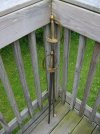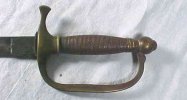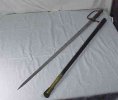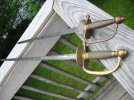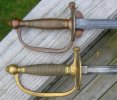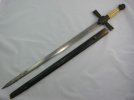horseclover
Basic Member
- Joined
- Nov 21, 2000
- Messages
- 2,776
I would be interested in seeing your exact swords. The Knights of Columbus swords, while similar are specifically different. The example in my photos, third from our right, with the longest blade has a plain fullered blade that is of the army 1840 type. As unmarked, there is no determination that it was anything but a militia sword. The example with the long blade, while unmarked, was likely assembled by the WH Horstmann company. Likewise the dark example with the urn type pommel. The rest in that grouping all done by the Ames Sword Co. and earlier NP Ames examples. All of them most likely militia and not society/fraternal use and before the American Civil War.
There are three specific Knights of Columbus sword types. Two of them have busts of Columbus as pommels (one facing forward, the other outwards), the third a flying eagle on top of a globe.
Cheers
GC
There are three specific Knights of Columbus sword types. Two of them have busts of Columbus as pommels (one facing forward, the other outwards), the third a flying eagle on top of a globe.
Cheers
GC

